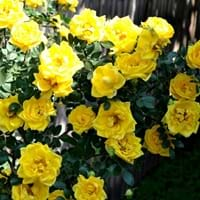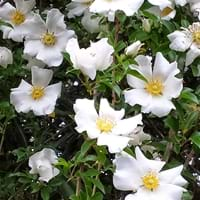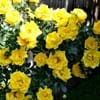Life Span
Perennial
Perennial
Type
Perennial
Flowering Plants, Ornamental Plant, Perennial, Shrub
Origin
Eastern Europe, Western Asia
Laos, Southern China, Taiwan, Vietnam
Types
Rosa Harisons Yellow, Rosa Persica
Not Available
Number of Varieties
Not Available
Habitat
gardens, Pastures, Prairies, Terrestrial, Tropical regions
Not Available
USDA Hardiness Zone
3-8
Not Available
AHS Heat Zone
10-1
Not Available
Sunset Zone
1a, 1b, 2a, 2b, 3a, 3b, 4, 5, 6, 7, 8, 9, 10, 11, 12, 13, 14, 15, 16, 17, 18, 19, 20, 21, 22, 23, 24
Not available
Habit
Oval or Rounded
Clump-Forming
Flower Color
Yellow
White
Flower Color Modifier
Not Available
Bicolor
Fruit Color
Non Fruiting Plant
Non Fruiting Plant
Leaf Color in Spring
Not Available
Green
Leaf Color in Summer
Not Available
Green
Leaf Color in Fall
Not Available
Green
Leaf Color in Winter
Light Green
Green
Leaf Shape
Pinnate
Pinnate
Plant Season
Summer, Fall
Spring, Summer, Fall
Sunlight
Full Sun, Partial Sun
Full Sun, Partial Sun
Type of Soil
Loam, Sand
Loam, Sand
The pH of Soil
Acidic, Neutral
Acidic, Neutral
Soil Drainage
Well drained
Well drained
Bloom Time
Early Summer, Summer, Late Summer, Early Fall
Spring, Late Spring, Early Summer, Summer, Late Summer, Early Fall, Fall
Repeat Bloomer
Yes
Not Available
Tolerances
Drought
Drought
Where to Plant?
Ground, Pot
Container, Ground, Pot
How to Plant?
Grafting, Stem Planting, Transplanting
Cuttings
Plant Maintenance
Medium
Medium
Watering Requirements
Form a Soil ring to water efficiently, Requires regular watering, Water twice a day in the initial period, Water when soil is dry
Average Water Needs
In Summer
Lots of watering
Lots of watering
In Spring
Moderate
Moderate
In Winter
Average Water
Average Water
Soil pH
Acidic, Neutral
Acidic, Neutral
Soil Type
Loam, Sand
Loam, Sand
Soil Drainage Capacity
Well drained
Well drained
Sun Exposure
Full Sun, Partial Sun
Full Sun, Partial Sun
Pruning
Prune if you want to improve plant shape, Remove damaged leaves, Remove dead leaves, Remove deadheads, Shape and thin as needed
Remove damaged leaves, Remove dead branches, Remove dead leaves
Fertilizers
All-Purpose Liquid Fertilizer, organic fertlizers
All-Purpose Liquid Fertilizer
Pests and Diseases
Aphids, Bacterial Diseases, Mites, Slugs
Beetles, Black Spot, Caterpillars, Downy mildew, Mosaic viruses, Powdery mildew, Rust, Scale insects, Thripes
Plant Tolerance
Drought
Drought
Flower Petal Number
Not Available
Double
Edible Fruit
Not Available
Not Available
Foliage Texture
Not Available
Medium
Foliage Sheen
Not Available
Glossy
Invasive
No
Not Available
Self-Sowing
No
Not Available
Attracts
Not Available
Birds, Butterflies
Allergy
no allergic reactions
Rash
Aesthetic Uses
Beautification, Bouquets
Showy Purposes
Beauty Benefits
Not Available
Not Available
Environmental Uses
Air purification
Air purification
Medicinal Uses
No Medicinal Use
Not Available
Part of Plant Used
Flowers
Flowers
Other Uses
Showy Purposes, Used as Ornamental plant
Oil is used in perfume, soaps, creams, etc.
Used As Indoor Plant
No
Yes
Used As Outdoor Plant
Yes
Yes
Garden Design
Container, Cutflower, Feature Plant, Foundation, Mixed Border
Container, Cutflower, Feature Plant, Foundation, Mixed Border, Topiary / Bonsai / Espalier
Botanical Name
Rosa foetida
Rosa laevigata
Common Name
Austrian briar, Persian yellow rose, Austrian copper rose
Cherokee Rose
In Hindi
Persian Yellow Rose
Cherokee rose
In German
Persian Yellow Rose
Die Cherokee-Rose
In French
Persian Yellow Rose
Le rosier des Cherokees
In Spanish
Persian Yellow Rose
rosa cherokee
In Greek
Persian Yellow Rose
Cherokee rose
In Portuguese
Persian Yellow Rose
Cherokee rose
In Polish
Persian Yellow Rose
Cherokee rose
In Latin
Persian Yellow Rose
Cherokee rose
Phylum
Not Available
Magnoliophyta
Class
Not Available
Magnoliopsida
Clade
Angiosperms, Eudicots, Rosids
Not Available
Tribe
Not Available
Not Available
Subfamily
Rosoideae
Not Available
Number of Species
Not Available
Not Available
Importance of Persian Yellow Rose and Cherokee Rose
Want to have the most appropriate plant for your garden? You might want to know the importance of Persian Yellow Rose and Cherokee Rose. Basically, these two plants vary in many aspects. Compare Persian Yellow Rose and Cherokee Rose as they differ in many characteristics such as their life, care, benefits, facts, etc. Every gardener must at least have the slightest clue about the plants he wants to plant in his garden. Compare their benefits, which differ in many ways like facts and uses. The medicinal use of Persian Yellow Rose is No Medicinal Use whereas of Cherokee Rose is Not Available. Persian Yellow Rose has beauty benefits as follows: Not Available while Cherokee Rose has beauty benefits as follows: Not Available.
Compare Facts of Persian Yellow Rose vs Cherokee Rose
How to choose the best garden plant for your garden depending upon its facts? Here garden plant comparison will help you to solve this query. Compare the facts of Persian Yellow Rose vs Cherokee Rose and know which one to choose. As garden plants have benefits and other uses, allergy is also a major drawback of plants for some people. Allergic reactions of Persian Yellow Rose are no allergic reactions whereas of Cherokee Rose have Rash respectively. Having a fruit bearing plant in your garden can be a plus point of your garden. Persian Yellow Rose has showy fruits and Cherokee Rose has no showy fruits. Also Persian Yellow Rose is not flowering and Cherokee Rose is not flowering . You can compare Persian Yellow Rose and Cherokee Rose facts and facts of other plants too.





